Just like all of us, writers are molded by their surroundings, turning their everyday experiences into inspiration for powerful storytelling and unforgettable characters.
Fortunately, the travel-minded bibliophile can visit many real-world locations that inspired and informed literature’s most well-known authors as they honed their craft. More than just repositories for dusty volumes of forgotten manuscripts, these locations breathe life into the literary genius of authors, letting visitors follow in their footsteps, see the world as it existed in their time, and gain a new appreciation for their most beloved stories.
Let’s take a look at some of the most interesting travel destinations for bibliophiles and examine what travelers can expect when they cross their historic thresholds!
The Hemingway Home and Museum – Key West, Florida
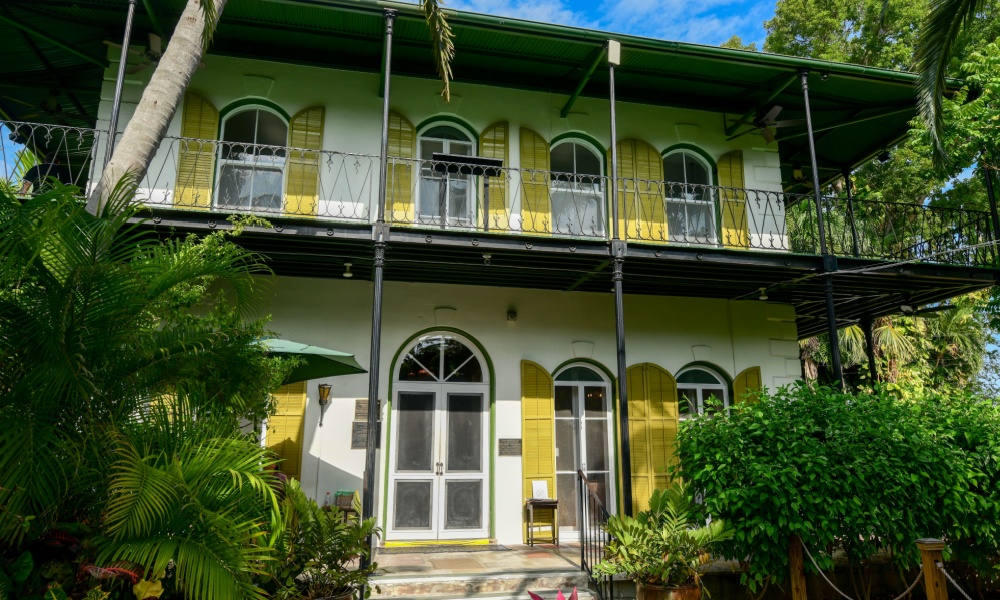
Hemingway’s House in Key West, Florida
More than just a beautiful place to sit on the sand and soak up some sun, Key West is an immensely important location in the life and career of legendary writer Ernest Hemingway. He lived on the island for almost a decade and wrote some of his most famous works at the the house and museum that is now dedicated to him.
In addition to composing numerous poems and short stories, Hemingway also completed work on the classics A Farewell to Arms and For Whom the Bell Tolls while a resident of Key West. Among the highlights of tours of the Hemingway Home and Museum are the residence’s beautiful garden and pool and the estate’s population of polydactyl cats, many of whom are descendants of Hemingway’s beloved feline companion Snow White.
Shakespeare and Company – Paris
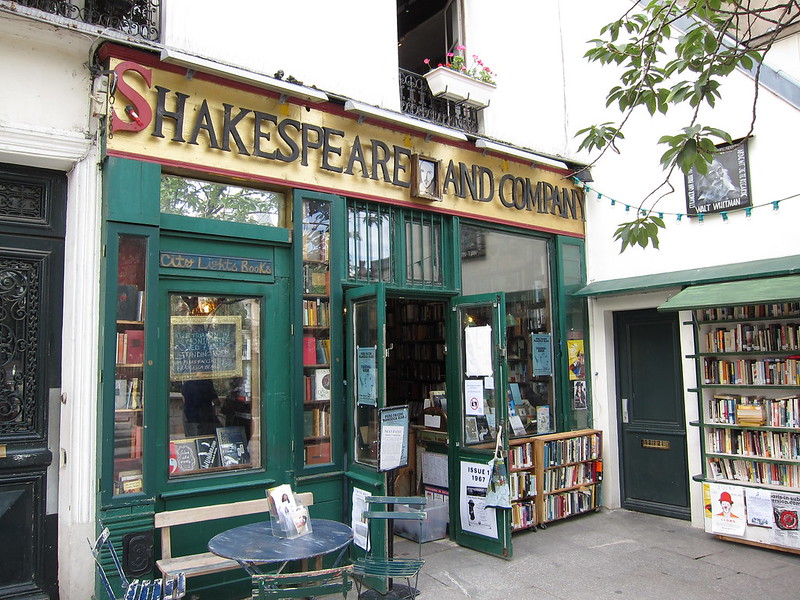
“Shakespeare and Company, Paris” by Niall McNulty is licensed under CC BY 2.0
Just steps from the watchful gaze of Notre Dame’s twin bell towers in Paris sits Shakespeare and Company, one of the most famous gathering places for literary-minded visitors. Established in 1951 in a building that was once a 17th-century monastery, this amazing bookstore has seen some of the titans of 20th century literature pass through its hallowed doors, including Allen Ginsberg, Richard Wright, and Ezra Pound.
Priding itself on nurturing readers and authors alike, the store hosts literary events each week, during which both veteran and up-and-coming writers are welcome to share their work with the public. Now a legendary institution among aspiring artists and storytellers the world over, Shakespeare and Company has been featured in several films, including the fantasy-comedy Midnight in Paris.
The Brontë Parsonage Museum – Haworth, England

“Bronte Parsonage” by Tony oldroyd is licensed under CC BY-SA 2.0
Any fan of gothic romance will tell you that the Brontë sisters are among the most influential authors of the 19th century, a fact heralded by the Brontë Personage Museum in Haworth. The house where Charlotte wrote Jane Eyre and Emily composed Wuthering Heights, the Parsonage was acquired by the Brontë family in 1820 and was the abode where the three sisters spent most of their lives.
In addition to fascinating relics like writing desks and a copy of Jane Eyre written in Charlotte’s own hand, this museum in England also exhibits several items from the sisters’ personal lives, including Charlotte’s wedding dress and Anne’s personal Bible. After exploring the inside of the Parsonage, be sure to check out the exterior gardens to learn how nature and the English countryside influenced the sisters’ work.
The Algonquin Hotel – New York City

“NYC – Midtown: Algonquin Hotel” by Wally Gobetz is licensed under CC BY-NC-ND 2.0
Few places in New York are as steeped in literary history as the Algonquin Hotel. Opened in 1902, this historic spot is famous among bibliophiles for its use as the meeting place for the “Vicious Circle,” a group of the city’s most talented writers and intellectuals. Known for their incredible wit and biting wisecracks, the Vicious Circle included short-story writer Dorothy Parker, columnist Robert Benchley, and playwright George S. Kaufman.
The group — who were also commonly known as the Algonquin Round Table — would meet for lunch in the hotel’s Rose Room from 1919 to 1929, trading jabs and often collaborating with one another on forthcoming projects. Now a permanent fixture in New York literature, the Vicious Circle is credited with setting the standard for humor and satire for an entire generation.
The Writers’ Museum – Edinburgh, Scotland
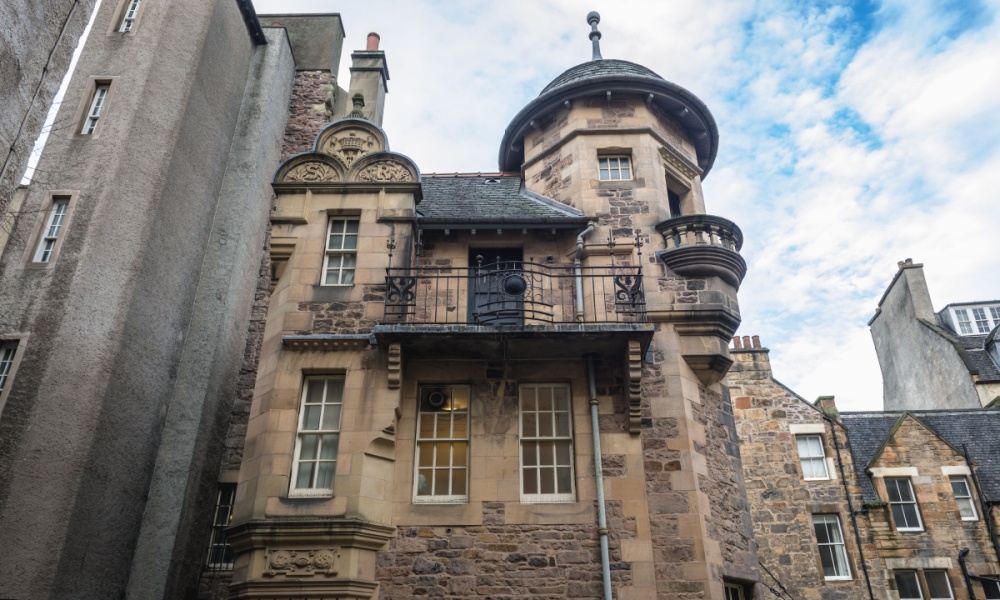
Writer’s Museum in the Old Town of Edinburgh, Scotland
The Writers’ Museum in the heart of historic Edinburgh is dedicated to honoring the lives and lasting legacies of three of Scotland’s most recognizable literary giants: Robert Burns, Sir Walter Scott, and Robert Louis Stevenson. A free museum operated by the City of Edinburgh Council, the Writers’ Museum lets visitors explore the lives of these literary greats from a multitude of different angles.
While shining a spotlight on the literary achievements of these fames writers, the museum also helps guests get to know the three authors better by displaying several of their personal and familial treasures. Standout items on display include a wide-ranging selection of manuscripts, a ring gifted to Stevenson by a Samoan chief, and the printing press that made the first copies of Scott’s Waverley novels.
Virginia Woolf’s Tavistock Square – London
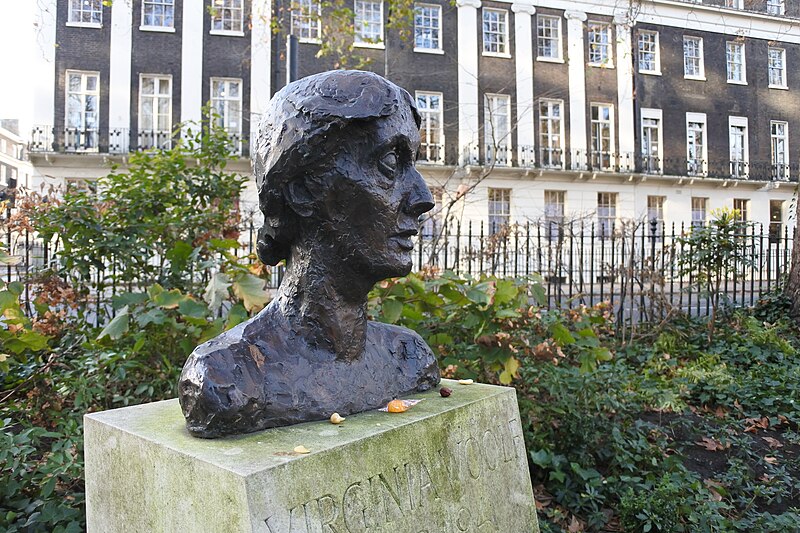
“Virginia Woolf” by Luke McKernan is licensed under CC BY-SA 2.0
Legendary British author Virginia Woolf lived at her Tavistock Square home from 1924 until 1939. One of the most important places in her life, Woolf wrote To the Lighthouse, Orlando, and Mrs. Dalloway, as well as several other of her most famous works while living in here. Woolf relished the house’s location in the heart of London‘s immense urban sprawl, and literary historians credit the area’s bustling atmosphere for inspiring and focusing her signature commentary on class and social structure.
Although Woolf’s home was destroyed during the Blitz in 1940, visitors to the area can enjoy a bronze bust of the famed author at a nearby park. Literary enthusiasts will also want to take a stroll down the street to the nearby Bloomsbury district, the neighborhood where Woolf would often meet with a circle of like-minded writers and intellectuals — including novelist E.M. Forster and economist John Maynard Keynes — in what became known as the Bloomsbury Group.
Mark Twain House & Museum – Hartford, Connecticut
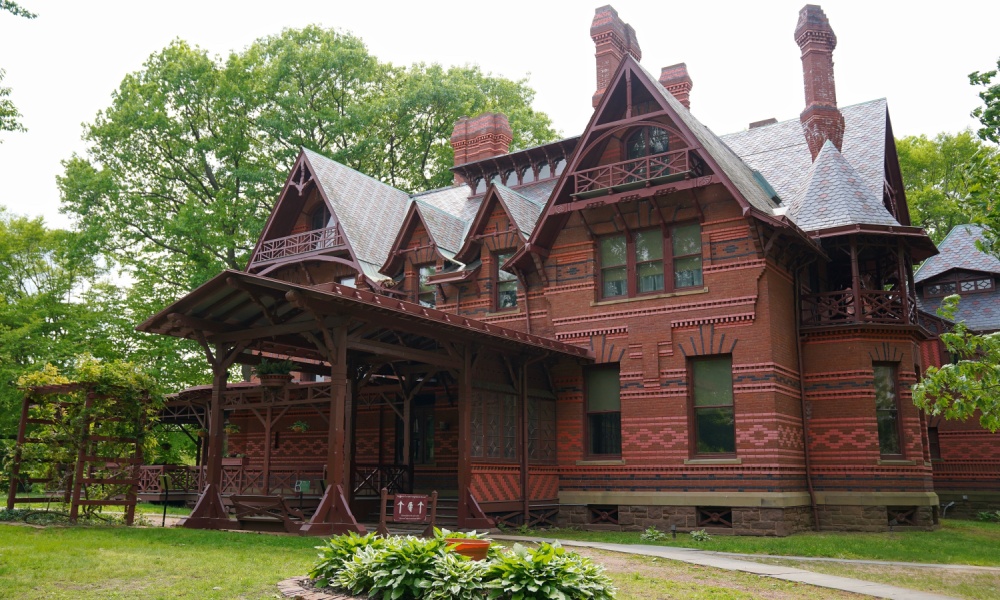
East side of the Mark Twain House and Museum
Few authors hold such an indelible place in Americana as Mark Twain. A legend even in his own time, Twain — whose real name was Samuel Clemens — lived in his Connecticut home from 1874 until 1891. It was during this time that Twain wrote several of his most recognizable works, including The Adventures of Tom Sawyer, The Adventures of Huckleberry Finn, and A Connecticut Yankee in King Arthur’s Court.
Now a museum, Twain’s home provides a deep dive into one of the most fascinating individuals in American literature. Along with a gallery of artwork inspired by the famed author and a rotating program of exhibitions, the Mark Twain House and Museum lets visitors see how Twain lived his day-to-day life at the height of his career. A favorite spot on most tours of the house is the “billiard room,” Twain’s office where he wrote most of his books.
The Café de Flore – Paris

“Café de Flore” by Vania Wolf is licensed under CC BY-SA 2.0
Few coffeehouses occupy as prominent a place in the collective psyche of bibliophiles the world over as Café de Flore. Opened in 1880, this is one of the most recognizable eating establishments in Paris, its beautiful façade emblematic of the City of Light’s artistic sophistication. The café has often served as an unofficial office for aspiring authors, and many of the most influential literary works of the mid-20th century were penned at Café de Flore’s tables. Still a favorite haunt for Paris’s modern-day authors, Café de Flore rose to fame in the 1940s as the gathering place for authors like Jean-Paul Sartre, Simone de Beauvoir, and Albert Camus.
The Old Manse – Concord, Massachusetts
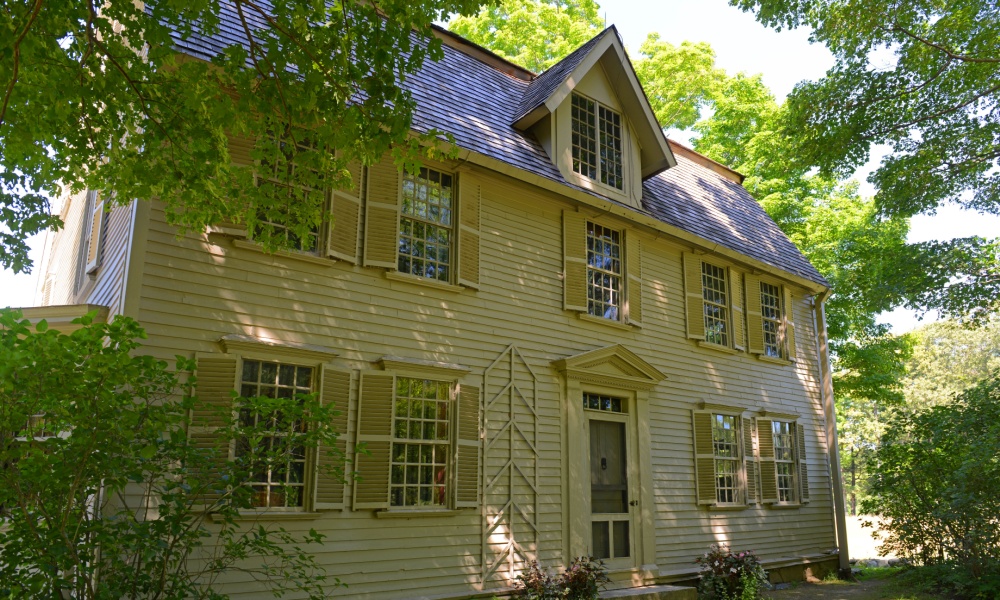
The Old Manse in Minute Man National Historical Park, Concord, Massachusetts
New England literary heritage runs deep at the Old Manse, a historic home and museum outside of Concord, Massachusetts. Built on a site overlooking a part of the Concord battlefield from the Revolutionary War, the Old Manse first achieved literary fame as the home of Ralph Waldo Emerson, who composed the transcendentalist masterpiece Nature within its walls. Nathaniel Hawthorne later lived at the Old Manse from 1842 till 1845 and wrote some of his most famous short stories at the home, including “Rappaccini’s Daughter” and “The Birth-Mark.”
You Might Also Enjoy: Exploring Movie Magic at the Best Animation Museums
Davy Byrnes – Dublin, Ireland
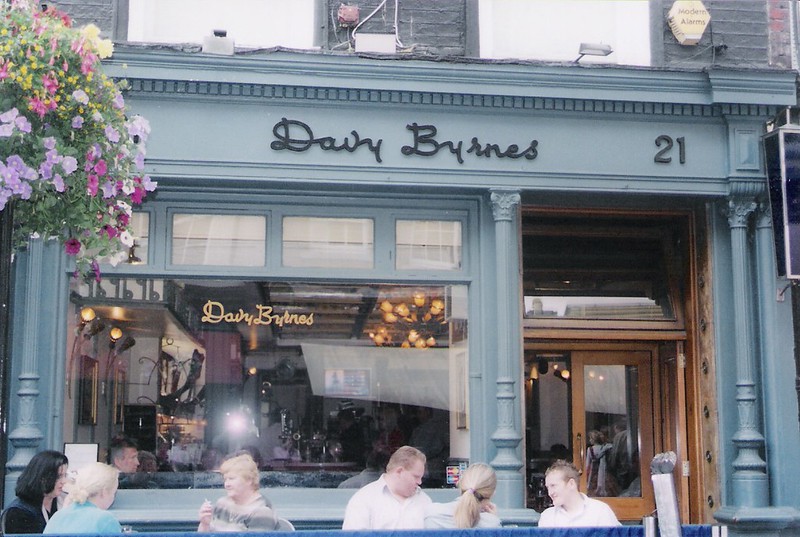
Davy Byrne’s Pub by bloomsday616 is licensed under CC BY-NDC-ND 2.0
Pub culture is a frequent theme throughout Irish literature and took on new life in the works of the iconic 20th century novelist James Joyce. One of the most celebrated authors in Ireland, Joyce frequented Davy Byrnes pub throughout much of his life. The establishment — which has been serving the city since 1798 — was first mentioned by Joyce in Dubliners, but gained new fame in Joyce’s challenging masterpiece, Ulysses. In one of the most famous scenes from the novel, the book’s protagonist, Leopold Bloom, stops by Davy Byrnes to enjoy a lunch of a gorgonzola cheese sandwich and a glass of wine.
Today, Davy Byrnes continues to celebrate its long association with Joyce’s work. Each June 16, the pub and the people of Dublin celebrate Bloomsday, which commemorates Ulysses and Joyce’s work as an author. As lunchtime rolls around, legions of bibliophiles and Joyce fans gather at Davy Byrnes to enjoy Leopold’s meal of a cheese sandwich and wine. Many revelers even arrive dressed as characters from the book in one of the greatest celebrations of Irish literature.
FAQs:
Q: What is the best time of year to visit the Hemingway Home and Museum in Key West?
A: Winter (December to February) is the best time, offering comfortable temperatures and clear skies. However, it’s also peak tourist season, so book tickets in advance.
Q: Can visitors take photos inside Shakespeare and Company in Paris?
A: Yes, but only in certain areas of the store. Flash photography is not allowed to protect the books and maintain a quiet ambiance.
Q: How can I reach the Brontë Parsonage Museum in Haworth?
A: The museum is accessible by train to Keighley Station, followed by a short bus or taxi ride. Driving is also an option, with parking available nearby.
Q: Is there a dress code at Café de Flore in Paris?
A: No formal dress code is required, but casual chic attire is encouraged to match the elegant atmosphere.
Q: Are guided tours available at the Mark Twain House & Museum in Connecticut?
A: Yes, the museum offers guided tours daily, including specialized tours focused on specific aspects of Twain’s life and work.
Q: Is the Writers’ Museum in Edinburgh wheelchair accessible?
A: Due to its historic nature, accessibility is limited, but the museum provides virtual tours and assistance where possible.
Q: Can I visit Davy Byrnes in Dublin without participating in Bloomsday festivities?
A: Absolutely. The pub is open year-round and welcomes visitors for food, drinks, and a taste of literary history any time.
Know where your favorite author lived and wrote their best books? Have you been there? Let us know in our comments section below!




Leave a Reply